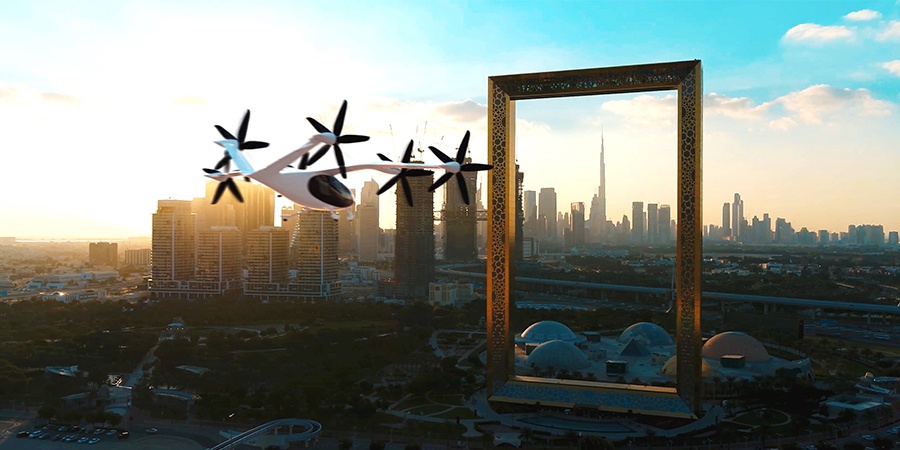Dubai will soon roll out air taxi services as an addition to its public transport system, which includes the Dubai Metro, trams, buses and cab services.
The Dubai government has approved the aerial taxi vertiports, aerial transport models developed by the Dubai Roads and Transport Authority (RTA). The vehicle models were displayed at the Authority’s stand at the World Government Summit 2023.
The aerial taxi operations project aims to introduce a new mobility service driven by pioneering technology to ease the mobility of individuals across urban areas in a safe, smooth and sustainable manner, integrated with the public transport network in Dubai. The service is set to be operational by 2026.
“The aerial taxi operation consists of two main stages: selecting the suitable technologies that meet global standards and forming a partnership with a specialist provider. To ensure the best outcome, companies are evaluated in terms of the technologies utilised in this cutting-edge form of sustainable transportation, as well as the comprehensive plan for its adoption and implementation,” said Mattar Al Tayer, RTA director-general and chairman of the board of executive directors.
Also read: UAE drives the future of mobility and autonomous technology
“The operation comprises four crucial elements. They include detailed negotiation with a multitude of companies active in this field, signing of commercial agreements, establishment of local entities to execute relevant business endeavours, development of the necessary infrastructure and the highly anticipated roll-out of the service.
“The second stage involves identifying a potential partner for investing in the infrastructure needed to introduce autonomous aerial taxis to Dubai's skies. At present, commercial negotiations are in progress with the most promising and specialised investors globally in the realm of air mobility to construct the requisite infrastructure.
“The launch of the service hinges upon the preparedness of the companies and the legislative requirements for operating aerial taxis. This also involves a thorough examination of all operational details and ensuring that all safety and security measures are in place,” Al Tayer explained.
“The initial phase encompasses choosing both manufacturers and operators based on their technology and timeline, as well as determining the sites for vertiport installations. The initial network of vertiports will connect four main areas of Dubai: Downtown Dubai (Burj Khalifa area), Dubai Marina, Dubai International Airport and Palm Jumeirah,” he said.
“Vertiports embody a revolutionary form of infrastructure that encompasses a range of facilities such as designated take-off and landing zones, a passenger waiting area, security protocols, and electric charging stations. These stations seamlessly integrate with other modes of transportation. The next step involves identifying exceptional investors who are experts in building the necessary infrastructure for the air mobility industry,” he added.
“The RTA’s aerial taxi initiative aligns with the Dubai Self-Driving Transport Strategy, aimed at transforming 25% of total mobility journeys in Dubai into driverless journeys by 2030,” Al Tayer concluded.
Aerial taxis possess the unique capability of vertical takeoff and landing and are sustainable, eco-friendly vehicles powered by electricity, emitting zero harmful pollutants to the environment. With a range of 241.4 kilometers and a top speed of 300 kilometers per hour, the aerial taxi can accommodate up to four passengers plus a driver.
RTA showcased its autonomous aerial taxi at the World Government Summit 2017.
Also read: Huawei Cloud provides digital edge for mobility online platform









